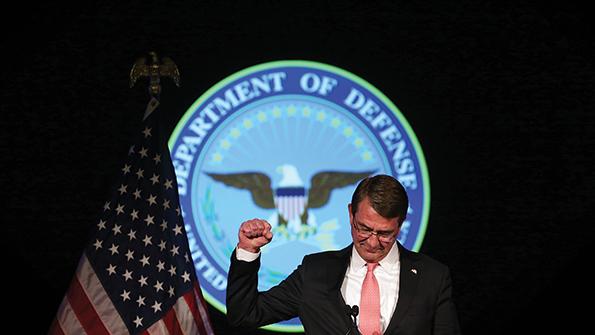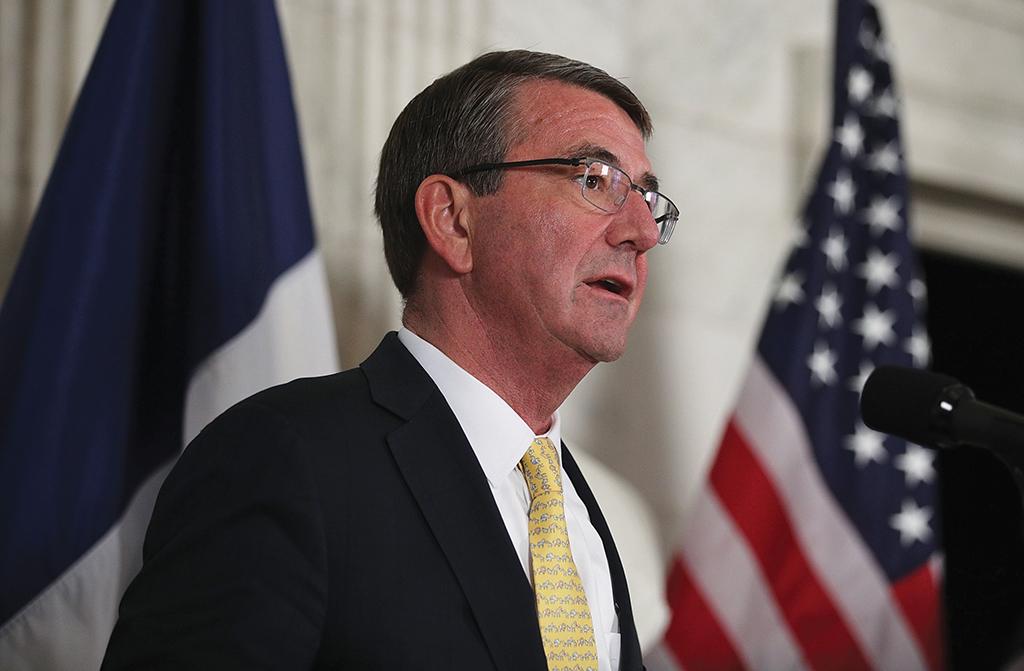An Appreciation: Former U.S. Defense Secretary Ashton Carter

In creating the Strategic Capabilities Office, then-Deputy Defense Secretary Ashton Carter tasked Will Roper to "do something about China."
Ashton Carter was a uniquely qualified secretary of defense.
Carter, who died Oct. 24 at his home in Boston, where he led Harvard University’s Belfer Center for Science and International Affairs, had also served as the deputy defense secretary and in other high-ranking posts within the Pentagon. His path through the civilian ranks of the military was not a typical one.
As an undergraduate student at Yale University, he studied medieval history and particle physics. As an Oxford-trained theoretical physicist, he contributed to a conversation about the science that was later involved in the Lockheed Martin F-35 fighter’s most advanced electronics.
When he entered the national security realm, Carter’s scientific credentials could have routed him to a research and engineering track, but his first senior Pentagon position thrust him into guiding nuclear non-proliferation policy as the Soviet Union broke up.
When he was called back to public service 15 years later as the head of the Pentagon’s acquisition, technology and logistics office, he might have been expected to focus more on technology than acquisition. But Carter plunged into acquisition contract minutiae. For example, he devised an almost diabolically detailed strategy to usher the politically perilous KC-X tanker competition to a successful contract signing, crafting a politically neutral algorithm for weighing each of 372 features desired by the U.S. Air Force.
And he called Lockheed Martin’s bluff in high-stakes pricing negotiations about the F-35. In his 2019 memoir, Carter described a Sunday-morning meeting with then-Lockheed CEO Robert Stevens in the spring of 2010. In Carter’s view, the F-35 program was in jeopardy of being canceled, and Stevens’ hard-nosed negotiating style had crossed a line. According to Carter, Stevens “casually” said: “Well, if you tell me how much money you have, I’ll tell you how many planes you can buy.” Carter wrote that he let Stevens’ question “hang in the air unanswered for a moment” before replying: “How about none?” and walking out of the room. Defense officials later levied $614 million against Lockheed’s award fee for the program, which enabled the government to recoup a portion of the cost overrun.

Carter also learned how to navigate the Pentagon’s notoriously tribal divisions by creating upstart organizations outside normal processes. When soldiers in Iraq and Afghanistan were being killed by improvised explosive devices, the military was able to speed up production of Mine-Resistant Ambush Protected vehicles. Drawing on that success, Carter went outside traditional procurement channels to create the Intelligence, Surveillance and Reconnaissance Task Force that flowed uncrewed aircraft to tactical units. “To do so required thinking of aerostats and unmanned aircraft as consumable goods, more like body armor than satellites—that is, seeing them as tools that could be fielded quickly and operated by units in the field rather than by the intelligence agencies,” Carter wrote in a 2014 piece for Foreign Affairs.
His time at the Pentagon coincided with a period of transition from a long war on terror to a new age of strategic competition with China and Russia. Again, he looked beyond what already existed. In 2012, he called Will Roper, then chief architect of the Missile Defense Agency, to his office and issued a challenge: Do something about China. That led to the creation of the Strategic Capabilities Office, which Roper led for nine months out of the Pentagon cafeteria. Among other things, the office helped demonstrate the use of the defensive Raytheon SM-6 missile as an offensive strike weapon.
Carter also faced sizable, arbitrary defense budget cuts under so-called sequestration spending caps set by the misguided 2011 Budget Control Act. The easiest path would have been to hunker down, but instead he pulled the corridors of the Pentagon like levers, working inside and outside the traditional bureaucracy.
And as defense secretary in 2015-17, Carter, in partnership with his deputy, Bob Work, set about preparing the defense establishment and private sector to face more capable adversaries on a limited budget. He championed outreach to clusters of American innovation, opening the Defense Innovation Unit Experimental. And he jump-started the Pentagon’s focus on driving innovation from within by creating the Defense Innovation Board.
In an Aviation Week Check 6 podcast, Roper says Carter had the bandwidth and intellectual capacity to be an expert in all the facets of the Pentagon and found ways to create a brighter future in each of them.
“That is an extraordinary legacy to leave behind and certainly sets the bar for any future secretaries of defense,” Roper says. “If they can leave their office feeling like they were a secretary in the vein of Ash Carter, then it will have been a job exceptionally well done.”



